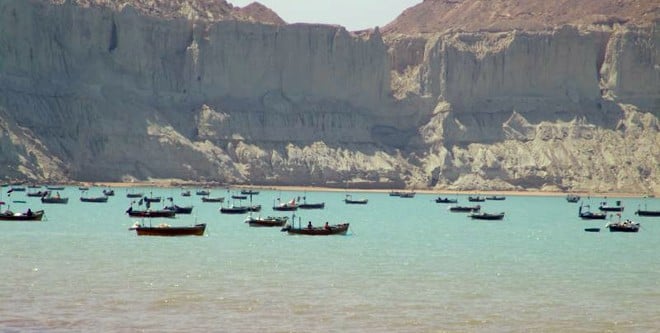

The day Dr Abdul Malik Baloch was nominated for the slot of chief minister of Balochistan on June 4, 2013, he said that people in 29 out of 30 districts of the province were living below the poverty line.
Aghaz-e-Haqooq-e-Balochistan, announced by the then Prime Minister, Syed Yusuf Raza Gilani, on November 24, 2009, included 34 economic proposals, among others. The government promised to implement all recommendations and proposals in three years.
The province has the largest unemployment ratio and lowest literacy rate. According to official figures, unemployment rate in the province is over 30 per cent.
A senior official of the Planning Commission claims that Balochistan is on the priority of the current government. Remaining anonymous, he says, "The federal government has announced Rs 43 billion as fiscal reward for the Balochistan government. The main focus of the current government is to develop road and rail infrastructure in the province," he says, adding, "Kachi Canal project which would irrigate 713,000 acres of land mostly in Balochistan has also been given a priority by the current government."
The project was started in 2002, with an estimated cost of Rs20 billion, to be completed by 2013. But the cost of the project has escalated to Rs59.4 billion and it has not been completed yet.
He enumerates a few ongoing projects in Balochistan, "The motorway that would connect Gwadar with Sindh is also a long-awaited project. This government has allocated funds for it as well," he says, adding, "The government has earmarked Rs8 billion for the completion of the Gwadar-Rato Dero and Khuzdar-Naag highways, which would be completed within a year. Rs10 billion rupees have been allocated for the Kalat-Chaman road project."
Balochistan’s labour force is estimated to be growing at 3.25 per cent per annum and according to the World Bank estimates, one per cent growth in the GDP of Balochistan increases 0.5 per cent in employment. It means that the provincial GDP must increase by at least 6.5 per cent a year to provide jobs for all the additions to the labour force, whereas a higher rate of seven-plus per cent, is required to start eliminating the backlog of unemployment and underemployment.
Prime Minister Mian Nawaz Sharif said during a meeting with parliamentarians from Balochistan last month that 90 per cent of the benefits of Pak-China Economic Corridor would benefit Balochistan in the form of employment and other economic opportunities.
"Studies are being carried out to determine feasibility of solar power projects in the province’s rural areas. The programme will address the problem of power shortage for domestic consumers, while providing sufficient power for agricultural purposes," he had said.
Infrastructure is also being developed, "We have been planning to introduce sustainable projects that would also ensure development of the province," says Dr Kaiser Bengali, advisor to chief minister Balochistan. "We have been focusing more on expanding road infrastructure in the province. Remoteness in the province has been made even worse by poor transport infrastructure, the markets are smaller, thus losing economies of scale and the cost of providing a unit of service, including governance, is higher than that in the rest of Pakistan," he says, adding, "the Gwadar Port is useless until it is connected to the rest of the province and the country. Water conservation is another major issue."
"We have also been working on a plan to address water conservation issue," says Bengali. "I strongly believe that peace would come only if people get jobs and business opportunities," he says.
A majority of the population in the province, especially in Pushtoon areas, depends on agriculture and water shortage is a major hurdle for the development of agriculture. According to experts, the Karez system of irrigation is on the verge of collapse. Seventy two per cent of the province depends on flood water, 26 per cent on Indus water, and only two per cent on groundwater.
People in the Pushtoon areas claim that the provincial government is more interested in developing the Baloch areas at the expense of the Pushtoon areas.
"Rapid growth is possible in Balochistan by taking advantage of the minerals and other assets and sustainable activities in agriculture, livestock, and fisheries," says Agha Hassan Baloch, senior leader of Balochistan National Party. "Both Dr Malik Baloch and Mian Nawaz Sharif’s government have not been able to bring people-oriented development in the province," he says, adding, "The resources of the province are being used for other parts of the country while people in the province are deprived of basic facilities."
Read also: Baloch discontent by Mir Mohammad Ali Talpur